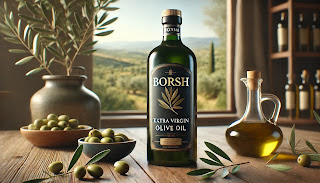Olive oil isn’t just something you use in the kitchen. It has a long history and is a big part of life in the Mediterranean. From ancient times to now, olive oil has played a role in food, culture, and health. Let’s dive into the story of how olive oil came to be and how it’s made. Next time you enjoy it on your salad or bread, you’ll know just how special it is!
The History of Olive Oil
Where It All Began
The story of olive oil starts more than 8,000 years ago in places like Greece, Turkey, and Syria. Back then, people picked wild olives from trees. Over time, they learned how to grow olive trees for better fruit. These little fruits became so important that people started trading and using them for food, rituals, and more.Ancient Civilizations
🏺 Minoans and Mycenaeans (3000 BCE): The people of Crete were some of the first to make olive oil on a big scale. They stored it in large jars and used it for food, ceremonies, and trade.🏜️ Egyptians (2000 BCE): In Egypt, olive oil was used for cooking, beauty products, and even in mummification. It was considered a luxury for royalty.
🇬🇷 Greeks and Romans: The Greeks believed olive oil was a gift from Athena, their goddess. They used it in sports, cooking, and religious ceremonies. The Romans got really good at making and selling olive oil, spreading it across their empire.
The Middle Ages
During the Middle Ages, olive oil was still very important, especially in the Mediterranean. Monasteries grew olive trees and used the oil for cooking and lighting lamps. It was also used as medicine.Modern Times
With global trade, olive oil made its way to other parts of the world. Today, it’s loved everywhere for its health benefits and tasty flavor. Scientists have even found it to be a key part of the Mediterranean diet, which is great for your heart.
How Olive Oil Is Made
 |
| People used large stones to crush olives into a paste |
1. Harvesting
🍃 Olives are picked in autumn. Farmers either pick them by hand or use machines that shake the trees. Timing is everything: pick too early, and the oil is bitter; pick too late, and the flavor won’t be as good.
2. Cleaning
💦 After picking, olives are washed to remove dirt and leaves. This keeps the oil pure and tasty.
3. Crushing
🪨 Old Method: People used large stones to crush olives into a paste.
⚙️ New Method: Machines now grind the olives quickly and keep their natural flavors intact.
4. Mixing (Malaxation)
🔄 The olive paste is gently mixed so the tiny oil droplets can come together. This step helps get more oil out of the olives.
5. Extracting the Oil
🔄 The olive paste is gently mixed so the tiny oil droplets can come together. This step helps get more oil out of the olives.
5. Extracting the Oil
🥤 Old Way: The paste was pressed between mats to squeeze out the oil and water.
🌀 New Way: Modern machines use spinning to separate the oil from the water. This is faster and cleaner.
 |
| Modern machines use spinning to separate the oil from the water |
6. Storing
🌡️ The fresh oil is filtered and stored in dark bottles or tanks. This keeps it safe from light and heat, which can ruin the flavor.
🫒 Virgin Olive Oil: Still good quality, but not as pure as EVOO. Great for cooking.
🛢️ Refined Olive Oil: Processed to remove imperfections. It has a milder taste and lasts longer.
🏺 Pomace Olive Oil: Made from leftover olive pulp. It’s used mostly in big kitchens and factories.
❤️ Good for Your Heart: It has healthy fats that lower bad cholesterol.
✨ Fights Inflammation: The antioxidants in olive oil can reduce swelling and pain.
💆 Skin and Hair Benefits: Olive oil keeps your skin soft and your hair shiny.
From lighting lamps in ancient times to being a must-have ingredient today, olive oil has always been something special. It’s not just food—it’s a connection to history and health.
Next time you drizzle olive oil on your food, think about how far it’s come. From ancient olive groves to your table, it’s a true gift from nature and human creativity.
And here is my favorite olive oil link: Borsh Extra Virgin Olive Oil
🌡️ The fresh oil is filtered and stored in dark bottles or tanks. This keeps it safe from light and heat, which can ruin the flavor.
Types of Olive Oil
🌟 Extra Virgin Olive Oil (EVOO): This is the best quality. It’s made without heat or chemicals, so it’s full of flavor and healthy antioxidants.🫒 Virgin Olive Oil: Still good quality, but not as pure as EVOO. Great for cooking.
🛢️ Refined Olive Oil: Processed to remove imperfections. It has a milder taste and lasts longer.
🏺 Pomace Olive Oil: Made from leftover olive pulp. It’s used mostly in big kitchens and factories.
Why Olive Oil Is So Special
Olive oil isn’t just tasty; it’s also really good for you:❤️ Good for Your Heart: It has healthy fats that lower bad cholesterol.
✨ Fights Inflammation: The antioxidants in olive oil can reduce swelling and pain.
💆 Skin and Hair Benefits: Olive oil keeps your skin soft and your hair shiny.
From lighting lamps in ancient times to being a must-have ingredient today, olive oil has always been something special. It’s not just food—it’s a connection to history and health.
Try It Yourself
And here is my favorite olive oil link: Borsh Extra Virgin Olive Oil


Comments
Post a Comment